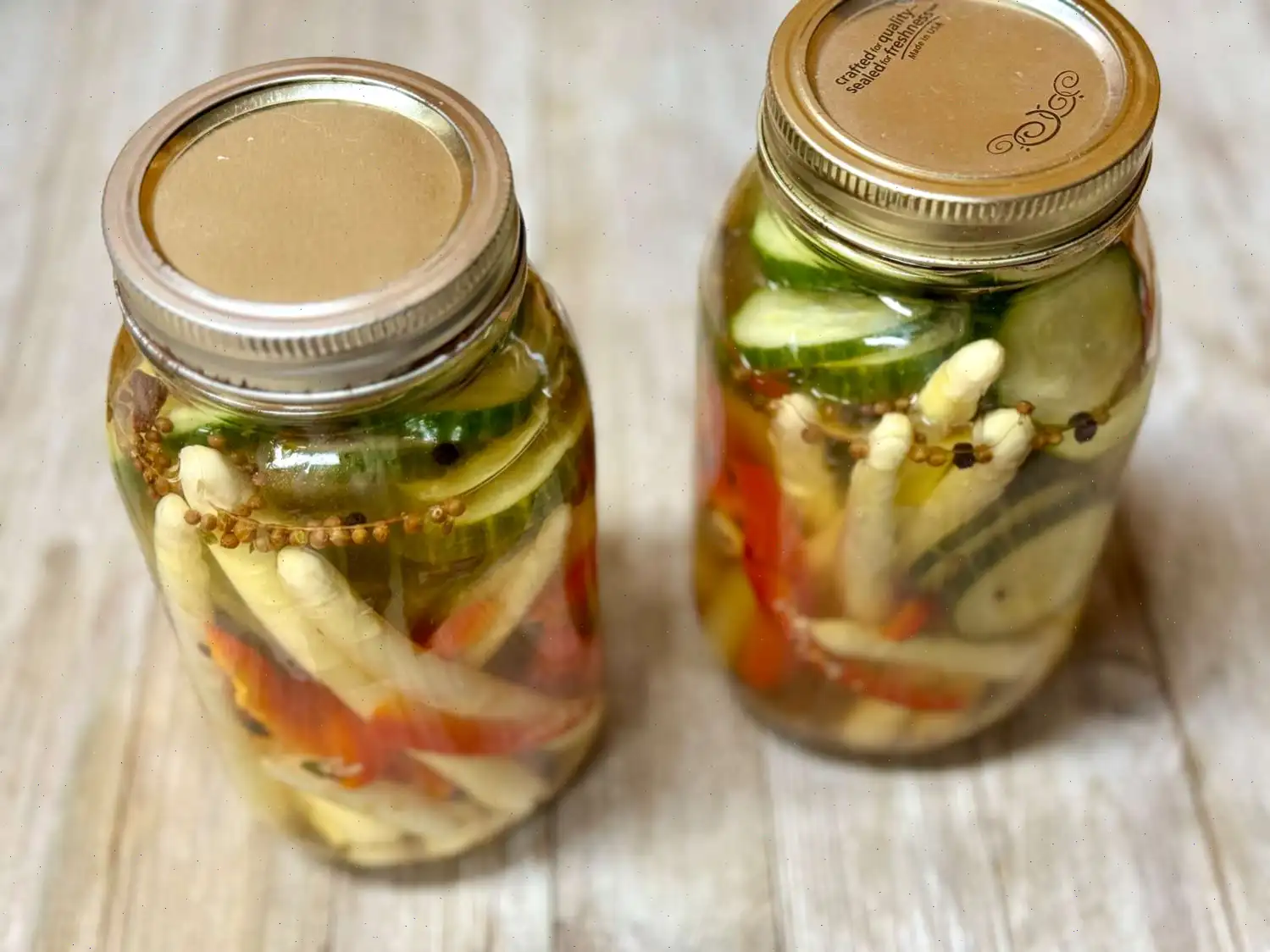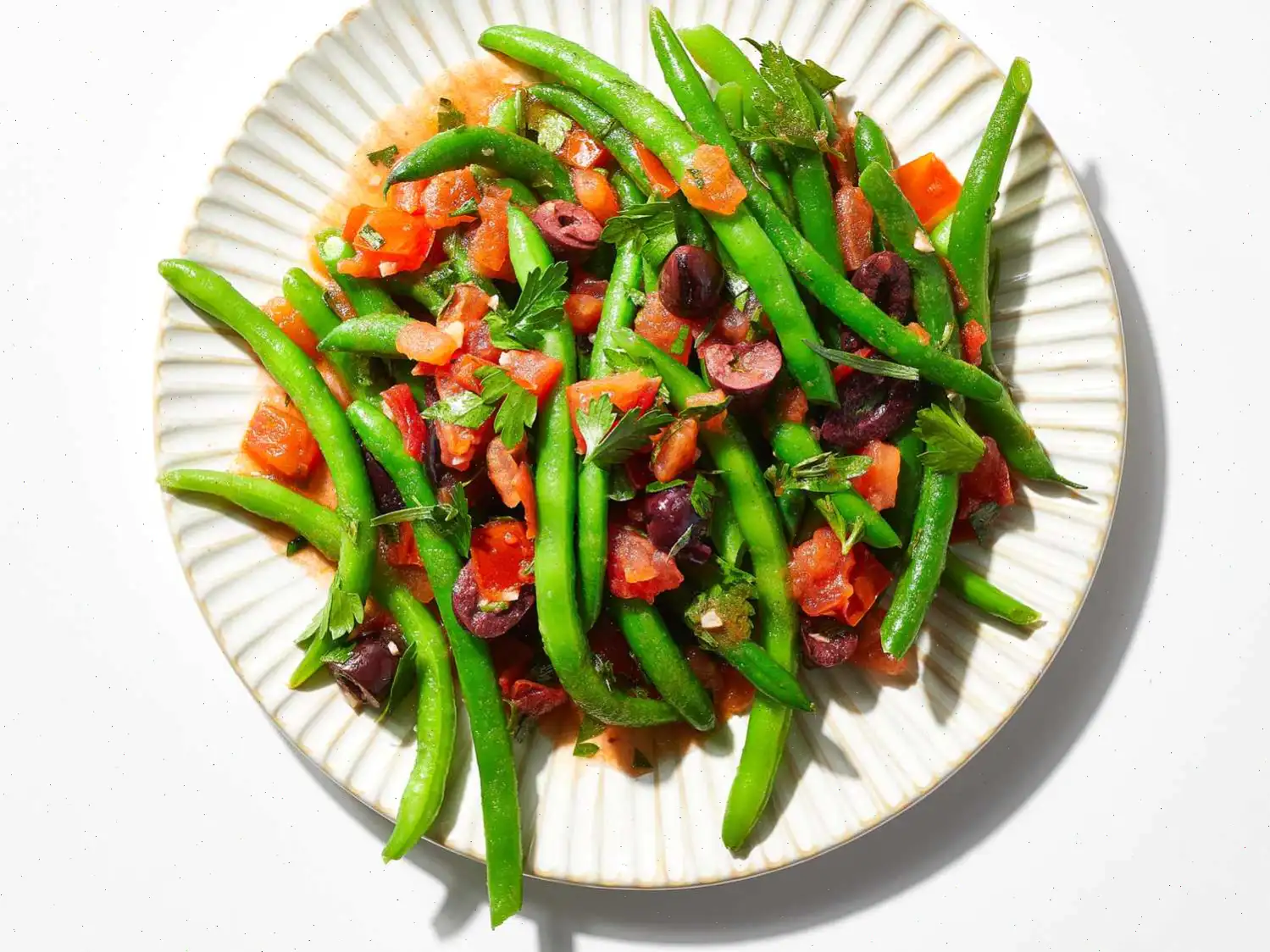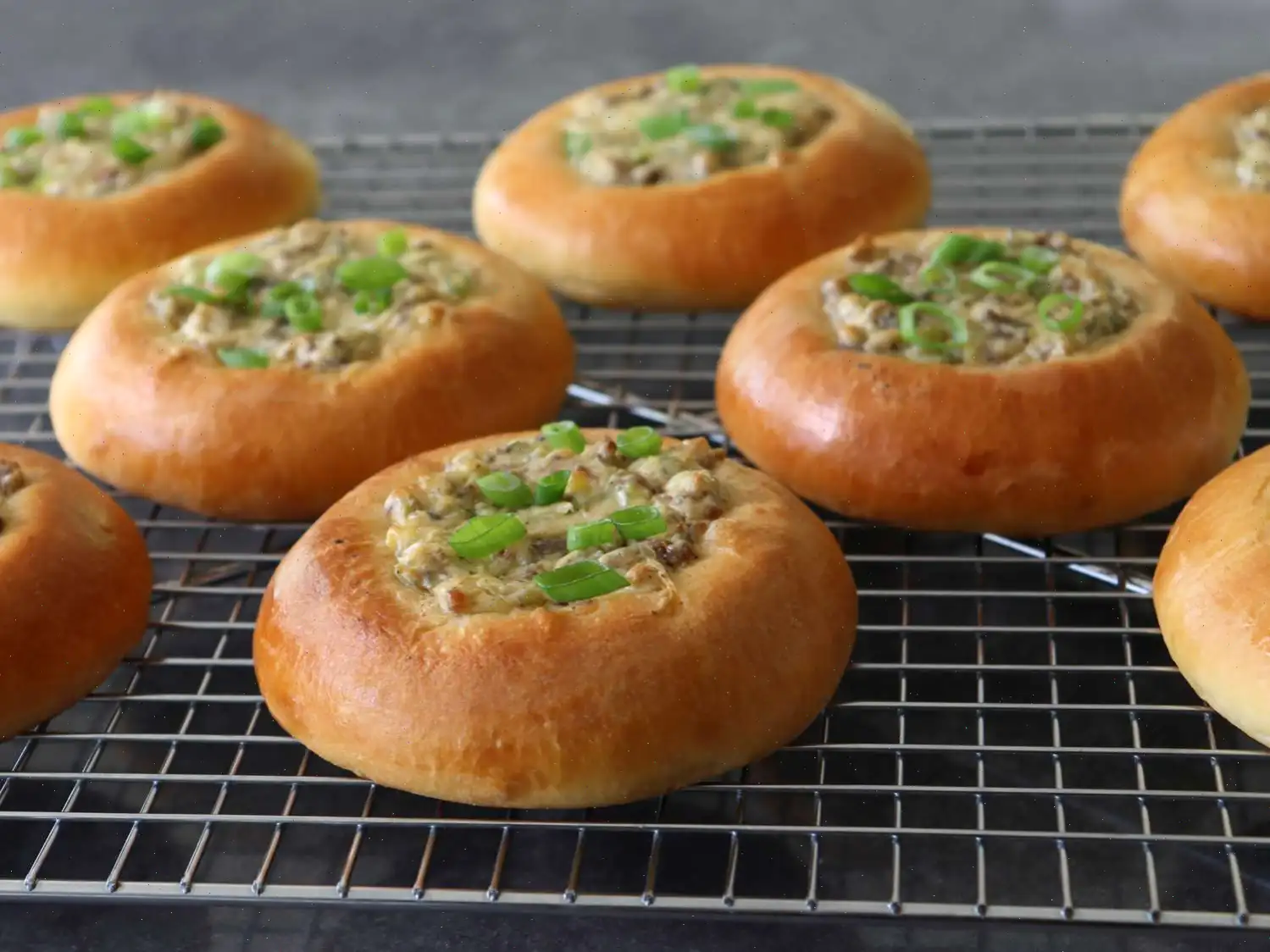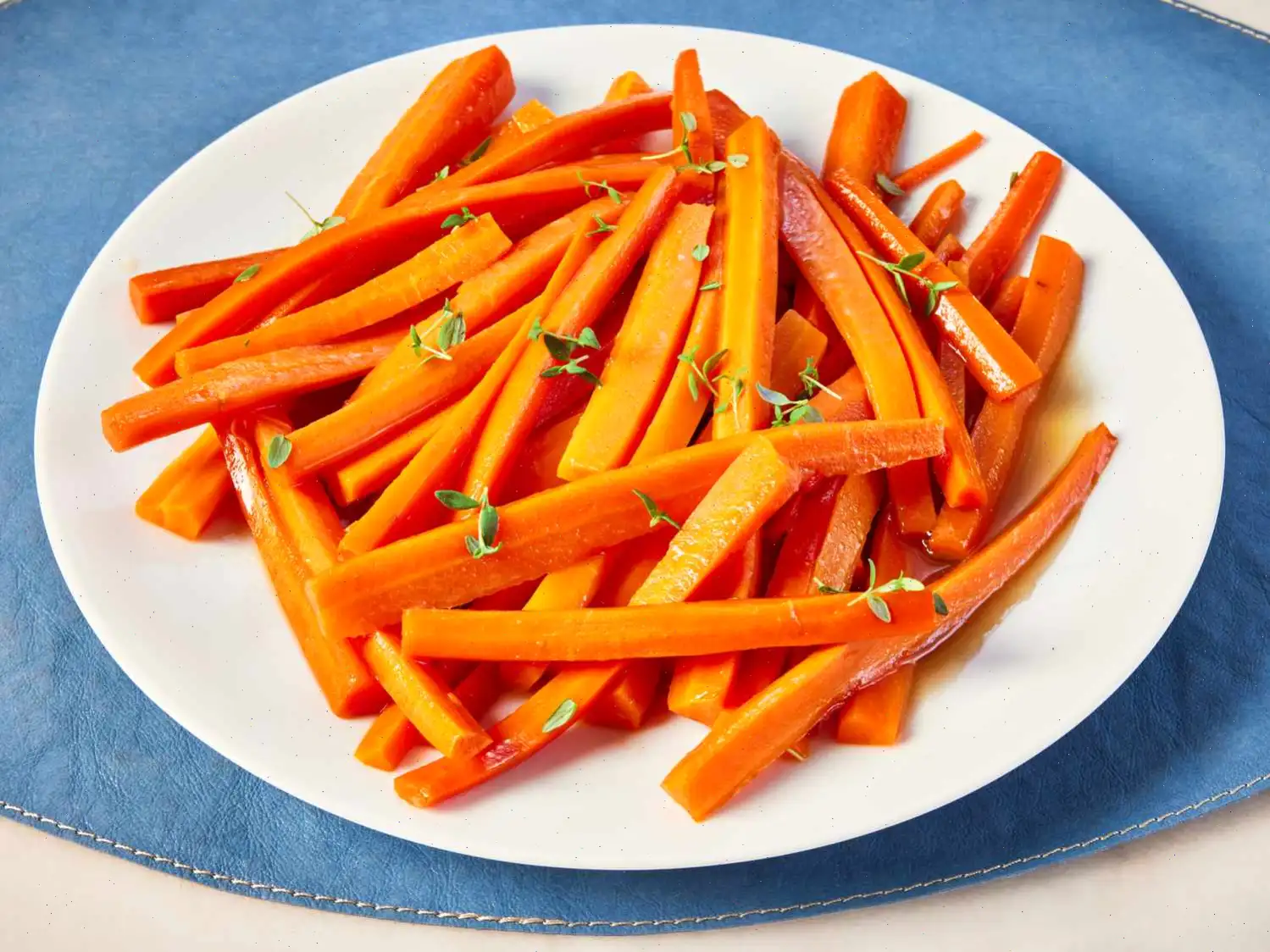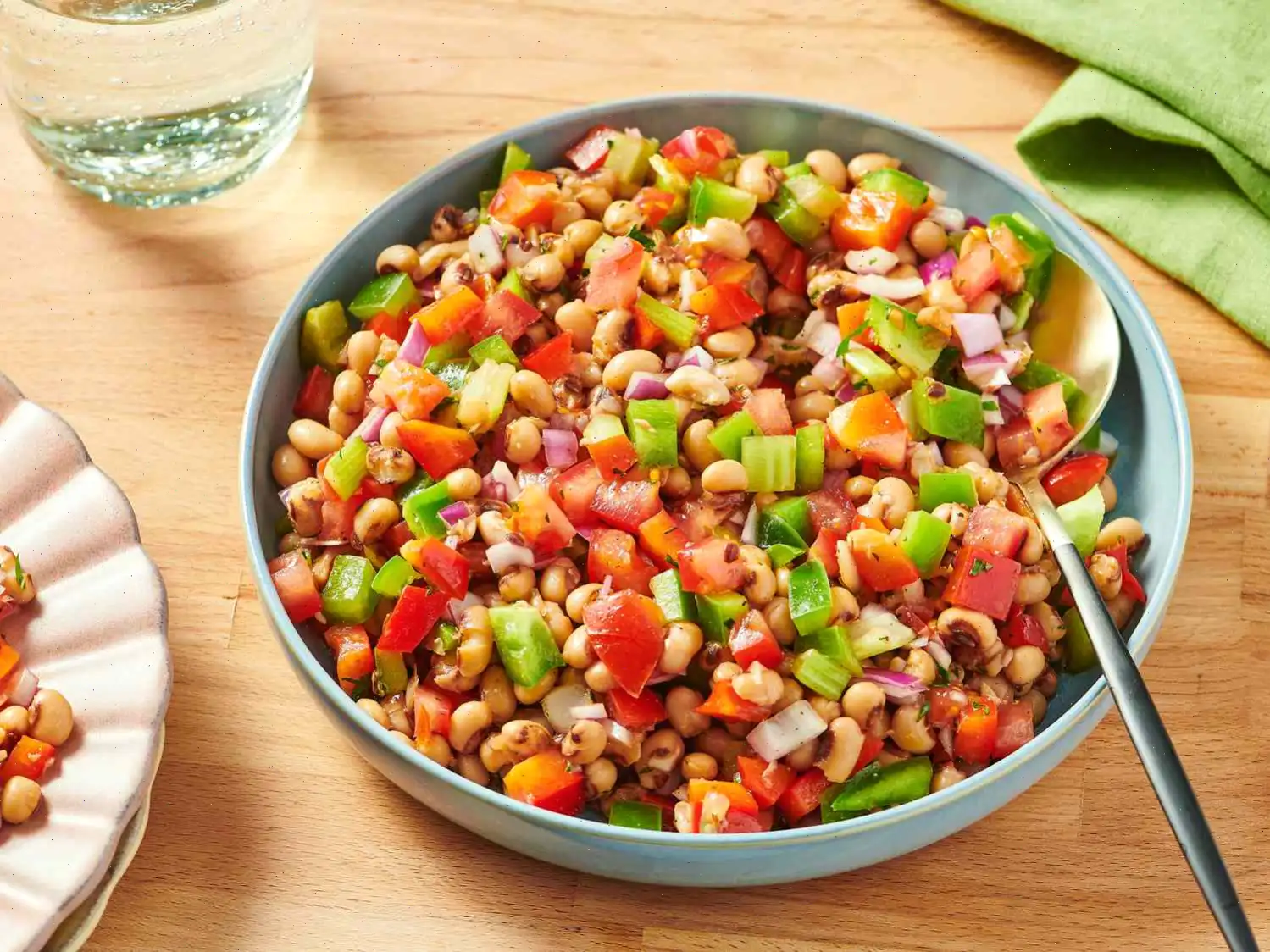
Pickled White Asparagus, Cucumbers, and Peppers Recipe
Pickled Asparagus with Bell Pepper and Cucumber
Ingredients
This recipe was developed for its original yield. Ingredient amounts are automatically adjusted, but cooking times and steps remain unchanged. Note that not all recipes scale perfectly.
- 1 pound white asparagus, trimmed
- 1 red bell pepper, seeded and cut into strips
- 1 English cucumber, sliced
- 2 teaspoons minced garlic
- 1 teaspoon pickling spice
- 1/2 teaspoon whole peppercorns
- 2 cups water
- 1 3/4 cups distilled white vinegar
- 1 tablespoon salt
- 1 teaspoon white sugar
Directions
Follow these easy steps to prepare the pickled vegetables:
- Divide the asparagus, bell pepper, cucumber, garlic, pickling spice, and peppercorns evenly between 2 quart-size canning jars.
- In a saucepan, bring water, vinegar, salt, and sugar to a boil over high heat. Once boiling, reduce the heat and let the mixture simmer for 5 minutes.
- Using a funnel, carefully pour the hot mixture into the jars over the vegetables.
- Seal the jars with their lids and let them sit for 1 hour, or until they are completely sealed.
- Refrigerate the pickles for a minimum of 48 hours before serving. After opening, store the pickles in the refrigerator.
Nutrition Facts (per serving)
| Calories | 34 |
|---|---|
| Total Fat | 0g |
| Saturated Fat | 0g |
| Cholesterol | 0mg |
| Sodium | 805mg |
| Total Carbohydrate | 5g |
| Dietary Fiber | 2g |
| Total Sugars | 2g |
| Protein | 2g |
| Vitamin C | 30mg |
| Calcium | 28mg |
| Iron | 1mg |
| Potassium | 199mg |
* Percent Daily Values are based on a 2,000 calorie diet. Your daily values may be higher or lower depending on your calorie needs.

This pickled white asparagus, cucumber, and pepper recipe is a delightful blend of fresh vegetables preserved with a tangy, flavorful brine. Not only is it a great snack for pickle lovers, but it also makes a great addition to salads or as a side dish to steaks. In this article, well explore the history, regional variations, and unique features of this recipe.
History of Pickled Vegetables
Pickling dates back to ancient civilizations, where it was used primarily as a method of preservation. The origins of pickling vegetables like cucumbers, peppers, and asparagus are thought to be in the Middle East and Asia, with evidence suggesting that the practice was well-known in ancient Mesopotamia. Pickled vegetables were a staple in many cultures, especially for their ability to last through the winter months, offering vital nutrients and variety in the diet during times when fresh produce was scarce.
White asparagus, a key ingredient in this recipe, has a distinct history of its own. Unlike green asparagus, white asparagus is grown underground to prevent photosynthesis. This method gives it a more delicate, subtle flavor. White asparagus is most commonly associated with Europe, particularly in Germany, where it is revered as a seasonal delicacy during the spring months.
Regional Variations
While the base ingredients of pickled white asparagus, cucumbers, and peppers remain relatively consistent, the flavor profile of pickled vegetables can vary significantly depending on regional traditions. In European countries such as Germany and the Netherlands, pickled vegetables often include herbs like dill, mustard seeds, and juniper berries, adding a depth of flavor. In contrast, American-style pickled vegetables tend to emphasize a sweeter brine with sugar and sometimes garlic or peppercorns for added zest.
In some Southern U.S. regions, pickled vegetables such as okra and peppers are a popular addition to "pickle jars," often served as a complement to fried foods or barbecue dishes. Similarly, in Mediterranean regions, you might find pickled vegetables served alongside grilled meats or seafood, often paired with olives and feta cheese for a Mediterranean platter.
Differences from Similar Dishes
Pickled white asparagus, cucumbers, and peppers distinguish themselves from other pickled vegetables through the use of white asparagus as a base. While cucumber pickles are common in various cuisines worldwide, the inclusion of white asparagus introduces a refined and slightly bitter flavor. This gives the dish an elegant twist compared to the more common cucumber-only pickles found in American and European cuisine.
Additionally, while many pickle recipes incorporate vinegar and spices, the balance of vinegar, sugar, and salt in this recipe results in a perfectly harmonious brine. The addition of pickling spice and whole peppercorns adds an extra layer of aromatic complexity, setting this recipe apart from basic cucumber pickles.
Where Its Typically Served
Pickled vegetables like these are served across various settings, from casual family meals to festive occasions. In Germany, pickled white asparagus is a traditional accompaniment to Easter meals, paired with dishes like roasted lamb or schnitzel. In other parts of Europe, pickled vegetables are often served alongside cold cuts, cheeses, or as part of a larger antipasti platter.
In the U.S., pickled vegetables are frequently found in charcuterie boards, served as a side with grilled meats, or even tossed into salads for an added crunch and tang. Their refreshing and tart flavor makes them a perfect balance to rich and savory dishes like steaks, burgers, and roasted meats.
Interesting Facts
- White asparagus, often called the "royal vegetable," is considered a delicacy in many European countries, particularly in Germany, Belgium, and the Netherlands.
- The tradition of pickling vegetables can be traced back to the ancient Egyptians, who used vinegar and salt to preserve their crops.
- In Japan, pickled vegetables known as "tsukemono" are commonly served with rice, soup, and fish, offering a balance of flavors that enhance the overall meal.
- Pickling vegetables not only extends their shelf life but also increases the concentration of certain nutrients, such as probiotics, which can aid in digestion.
This pickled white asparagus, cucumber, and pepper recipe is a timeless dish that brings a delightful crunch and tang to any meal. Whether youre enjoying it as a side dish, in a salad, or just as a snack, its sure to become a favorite in your kitchen!
FAQ about Pickled White Asparagus, Cucumbers, and Peppers Recipe
Comments
Rebecca Scott
08/25/2022 11:03:11 PM
Taste is remarkable.


